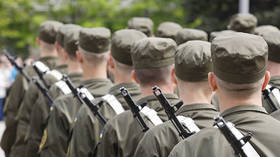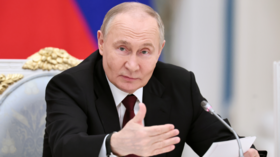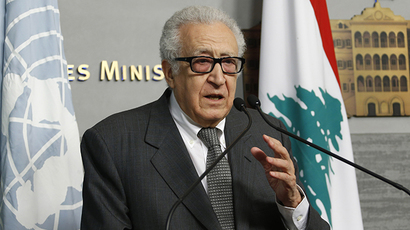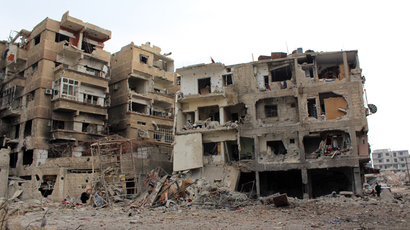Humanitarian deal reached on war-hit Homs, people return to embattled Aleppo
As the Syrian government and opposition in Geneva have taken a step towards resolving the humanitarian crisis in besieged Homs, RT visited another major battleground, Aleppo, to see people returning to devastated homes in areas liberated by the army.
The slowly-progressing talks between the Syrian government and the external opposition in Geneva have yielded their first result. The sides have reached an agreement that would see humanitarian aid enter the besieged city of Homs, and would allow women and children to leave its war-ravaged areas.
What makes the deal dubious, however, is that it’s not yet clear how it will be implemented on the ground. Currently, the Syrian government is promising - voiced on Sunday by Deputy Foreign Minister Faisal Mekdad - that women and children can leave Homs safely. Another question is how rebels inside the city besieged by the army will react.
"If the armed terrorists in Homs allow women and children to leave the old city of Homs, we will allow them every access. Not only that, we will provide them with shelter, medicines and all that is needed,” he said, as cited by Reuters. "We are ready to allow any humanitarian aid to enter into the city through the arrangements made with the UN."
Much will now depend on whether the external opposition present in Geneva will be able to influence the rebels in the city of Homs itself. Opposition activists have so far said that rebels have demanded a complete end to the blockade, as opposed to just letting some civilians out. Besides, an online video showed demonstrators with Islamist flags denouncing the Geneva talks as "treachery”.
Homs, a major battleground in the center of Syria, dubbed by the opposition as the "Capital of the Revolution", was largely recaptured by government forces last year. However, parts of army-blockaded Homs, including the old city, remain under rebel control.

Syrian officials have meanwhile said the ceasefire plan for Aleppo, another key war-zone, could be used as a model for other parts of Syria, where the conflict between President Bashar Assad's government and opposition forces has claimed over 100,000 lives.
People have recently started returning to their homes in Aleppo, after government forces recaptured large parts of the town from militants.
RT’s Maria Finoshina has flown on the first civil airplane to land at Aleppo international airport to discover the city slowly rising from the ashes of war.
“This flight means the return of life to this airport – and this area,” Basem Mansour, the director of the airport, said, adding that regular flights were due to start in a month’s time.
From the airport, Finoshina went to a village outside Aleppo, which has just come back under government control. 14 thousand residents fled after the rebels' attack. One third of the population has now returned to discover houses either destroyed or looted.
“It all depends on how lucky you are,” a resident tells
RT. “Our home was almost intact, but they stole
everything.”
A pregnant woman is optimistic, even though she found her home
was completely destroyed.
“We now have nothing,” she says. “But God gave us a baby, and that will give us power to build everything from scratch. We are ready.”

As security is still fragile in the village, the army is patrolling the area, calling on the locals to get involved. The city of Aleppo itself, where the RT crew goes next, looks unexpectedly secure.
“To be honest we are a bit surprised to see what used to be Syria's biggest business center still so vibrant and actually safe,” Finoshina says. “We even took our flak jackets with us expecting to see clashes in the middle of a completely destroyed city... But don't be mistaken. This is the western part of the city. The eastern part - you'd better not to go there as no one can guarantee any security for anybody in that part of the city.”
The eastern part of Aleppo is where moderate Free Syrian Army factions are fighting radical Al-Qaeda-affiliated groups for control, while government forces are in a struggle with them both.
“We – Syrians – are ready to reconcile with each other,” Mohammad Waheed Akkad, the Aleppo governor tells RT. “And Aleppo is a good place to start with, and to give an example to other regions. But these guys – from Nusra front, from Al Qaeda, they don't know what they want, but not peace, for sure.”
Militants still control half of the city as well as a large part of northern Syria. That’s the biggest challenge to the ceasefire plan pushed forward by the Syrian government prior to the Geneva peace conference.
For more on life in Aleppo, watch RT’s Maria Finoshina reporting from the war-torn city.














